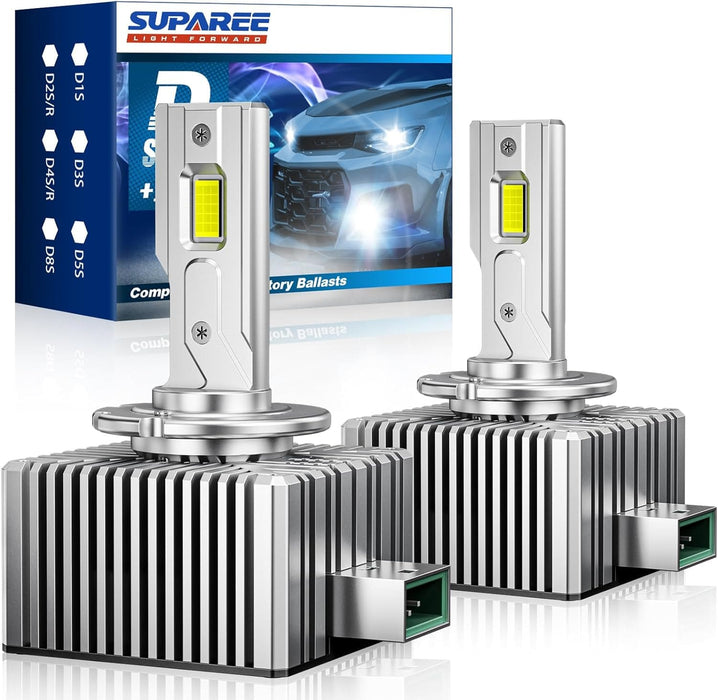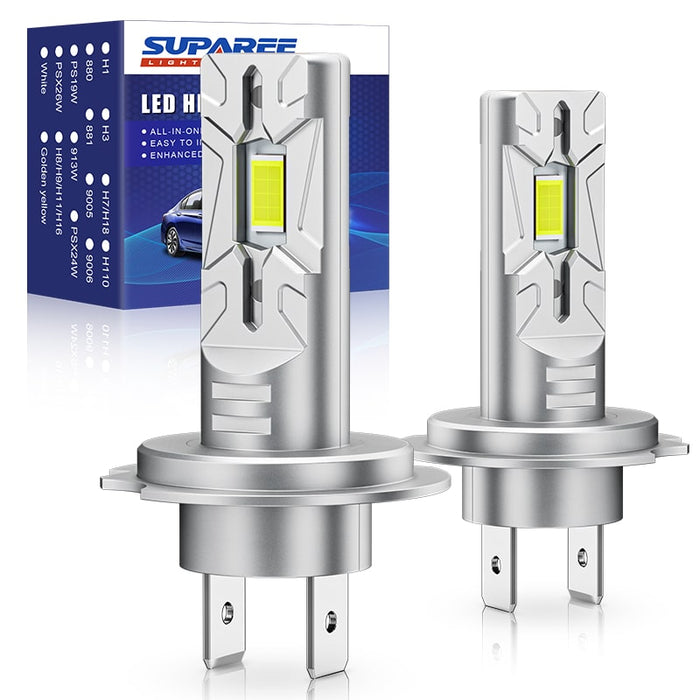When it comes to upgrading your vehicle's headlights to LED bulbs, you may encounter two main types: fan-cooled and fanless. Both designs aim to address the heat management issues associated with LED bulbs, but they take different approaches. In this article, we'll compare fan and fanless LED headlights to help you determine which option is the better choice for your needs.
Fan-cooled LED Headlights

2. Longer lifespan: By maintaining lower operating temperatures, fan-cooled LED bulbs often have a longer lifespan compared to fanless designs. The active cooling helps prevent overheating, which can cause premature LED failure.
3. Consistent light output: The fan helps maintain a consistent operating temperature, which in turn ensures stable light output over time. This is particularly important for maintaining proper illumination and color temperature.
4. Potential noise: One downside of fan-cooled LED headlights is that the fan can produce a small amount of noise. However, high-quality fans are usually quiet and unobtrusive, and the noise is often drowned out by the vehicle's engine and road sounds. Related articles: Why Do LED Headlamp Bulbs Need Active Cooling?
Fanless LED Headlights

1. Passive cooling: Fanless LED headlights rely on passive cooling methods, such as heatsinks and heat dissipation fins, to manage the heat generated by the LED chip. These designs aim to provide sufficient cooling without the need for a fan.
2. Silent operation: Since there is no fan, fanless LED headlights operate silently. This can be preferable for some users who prioritize a quiet driving experience.
3. Simpler design: Fanless LED headlights have a simpler design compared to fan-cooled options, as they don't require the integration of a fan and its associated wiring. This can make installation slightly easier and may reduce the potential for component failure.
4. Potential heat limitations: Without active cooling, fanless LED headlights may be more susceptible to heat buildup, especially in high-temperature environments or during extended use. This can lead to reduced lifespan and potential performance issues compared to fan-cooled designs.
Factors to Consider
When choosing between fan and fanless LED headlights, consider the following factors:1. Climate: If you live in an area with high temperatures, a fan-cooled design may be more suitable to ensure optimal heat dissipation.
2. Bulb size: Some LED headlight bulbs may not have enough space to accommodate a fan, making a fanless design the only option.
3. Noise tolerance: If you are sensitive to noise or prioritize a quiet driving experience, a fanless design may be preferable.
4. Budget: Fan-cooled LED headlights may be slightly more expensive due to the additional components and engineering required.
Ultimately, both fan and fanless LED headlights can provide excellent performance and improved visibility compared to traditional halogen bulbs. The best choice for you will depend on your specific needs, preferences, and the factors mentioned above. When making your decision, be sure to choose high-quality LED bulbs from reputable manufacturers to ensure optimal performance, reliability, and longevity.

